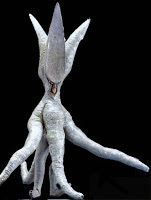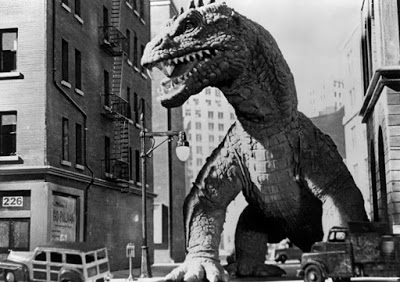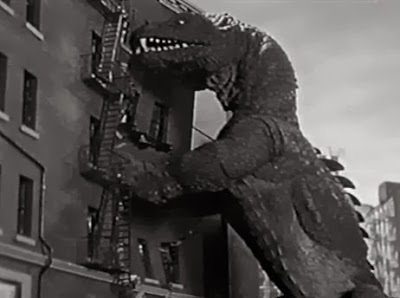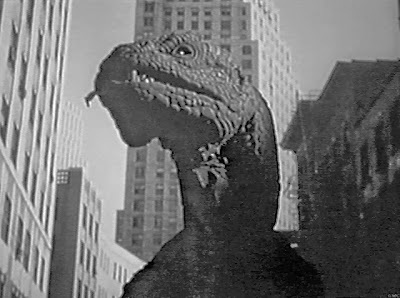- Home
- Features
- Movies/Media
- Collectibles
- Comics/Books
-
Databases
-
Figure Database
>
-
X-Plus Toho/Daiei/Other
>
- X-Plus 30 cm Godzilla/Toho Part One
- X-Plus 30 cm Godzilla/Toho Part Two
- X-Plus Large Monster Series Godzilla/Toho Part One
- X-Plus Large Monster Series Godzilla/Toho Part Two
- X-Plus Godzilla/Toho Pre-2007
- X-Plus Godzilla/Toho Gigantic Series
- X-Plus Daiei/Pacific Rim/Other
- X-Plus Daiei/Other Pre-2009
- X-Plus Toho/Daiei DefoReal/More Part One
- X-Plus Toho/Daiei DefoReal/More Part Two
- X-Plus Godzilla/Toho Other Figure Lines
- X-Plus Classic Creatures & More
- Star Ace/X-Plus Classic Creatures & More
-
X-Plus Ultraman
>
- X-Plus Ultraman Pre-2012 Part One
- X-Plus Ultraman Pre-2012 Part Two
- X-Plus Ultraman 2012 - 2013
- X-Plus Ultraman 2014 - 2015
- X-Plus Ultraman 2016 - 2017
- X-Plus Ultraman 2018 - 2019
- X-Plus Ultraman 2020 - 2021
- X-Plus Ultraman 2022 - 2023
- X-Plus Ultraman Gigantics/DefoReals
- X-Plus Ultraman RMC
- X-Plus Ultraman RMC Plus
- X-Plus Ultraman Other Figure Lines
- X-Plus Tokusatsu
- Bandai/Tamashii >
- Banpresto
- NECA >
- Medicom Toys >
- Kaiyodo/Revoltech
- Diamond Select Toys
- Funko/Jakks/Others
- Playmates Toys
- Art Spirits
- Mezco Toyz
-
X-Plus Toho/Daiei/Other
>
- Movie Database >
- Comic/Book Database >
-
Figure Database
>
- Marketplace
- Kaiju Addicts
|
Oodako (オオダコ, Ōdako) is a giant octopus kaiju created by Toho Studios that first appeared in the 1962 Godzilla film, King Kong vs. Godzilla. It returned in War of the Gargantuas. Oodako is also known as the "Daidako" (Giant Octopus) and "The Giant Devilfish". Oodako also appeared in the alternate ending for the movie Frankenstein Conquers the World. Name Toho's official name for the creature is simply "Giant Octopus", as shown in promotional material for Godzilla: Tokyo S.O.S.. Oodako is a fanmade nickname which translates to giant octopus, like Ootokage for the giant lizard and Ookondoru for the giant condor. History King Kong vs. Godzilla In King Kong vs. Godzilla, Oodako crawls ashore on Farou Island and attacks a village hut in an attempt to get the special soma berry juice that the natives store there. The natives, along with members of a pharmaceutical company, attempt to defeat Oodako with spears and shotguns, but to no avail. King Kong then appears behind a giant wooden fence, crumbling it with his bare hands and throwing the pieces at Oodako. Kong grabs Oodako, but the octopus holds tightly on to Kong's head. After a short struggle, Kong pulls the monster off and throws it to the ground. He then throws two boulders at Oodako's head. Oodako flees back to the beach and presumably returned to the sea, Kong beating his chest and roaring in victory. Frankenstein vs. Baragon In the alternate ending for Frankenstein Conquers the World, after Frankenstein defeats Baragon, Oodako comes from the sea and fights Frankenstein. Frankenstein battles fiercely, but can't compete with Oodako's numerous and powerful tentacles. Oodako drags Frankenstein in to the water, seemingly to his death. War of the Gargantuas In War of the Gargantuas, Oodako attacks a fishing boat, but is defeated by the Green Gargantua, Gaira. Filmography
King Kong vs. Godzilla War of the Gargantuas Frankenstein vs. Baragon (Alternate Ending)
1 Comment
Kumonga (クモンガ, Kumonga) is a giant spider kaiju created by Toho Studios that first faced Godzilla in the 1967 Godzilla film, Son of Godzilla. He is also known as Spiega, a name given to him for English language audiences. History According to the journal of the now deceased Dr. Matsumia, Kumonga was a type of very large spider to dwell in the jungle of Sogellel Island. However, exposure to the radioactive storm created by the UN’s failed weather experiment transformed Kumonga into a 45-meter tall monster. Showa Series Kumonga in the Showa SeriesIn the Showa era, Kumonga was a giant spider that lived in Sogell Island. It first appeared when it trapped and poisoned Kamacuras. Then it trapped Godzilla's son, Minilla in webbing and closed in for the kill. However, Godzilla arrived and defended his son. Kumonga attacked and nearly succeeded in killing Godzilla, but Minilla helped his father and using their atomic rays, they burned Kumonga's body, severely injuring it. However, Kumonga was not dead and the scientists placed Kumonga on Monsterland, where it lived with many other monsters including Gorosaurus, Varan, and Manda. In 1999, aliens known as Kilaaks, captured and mind-controlled the monsters of the island. The kaiju were released in cities throughout the world. But in the end, the humans broke the mind-control and freed the monsters. The monsters were then sent to attack and destroy King Ghidorah. Kumonga took part in the fight by trapping King Ghidorah in the thick webbing. After King Ghidorah was defeated, Kumonga and the other monsters returned to Monsterland and lived peacefully to this day. Milennium Series Kumonga was featured in the 2004 movie, Godzilla: Final Wars, not that different in appearance, as one of the many mind-controlled monsters of the Xilians. It appears in a desert in Arizona where it destroys a trailer. Then suddenly, the Xilians teleport the spider and the other monsters around the world. They tell the humans that they took the monsters away to save Earth. However, the humans find that the Xilians were controlling the monsters and the Xilians release all the monsters again to finish destroying the cities they were attacking. When Godzilla is freed from the south pole and fights the alien-controlled kaiju, defeating Gigan and Zilla. Through the alien leader's command, Kumonga is released in New Guinea to battle him. Godzilla approached the monstrous arachnid and let loose a roar to announce his presence. At first, Kumonga was able to trap Godzilla in thick webbing, but Godzilla managed to grab a strand of webbing that was still attached to Kumonga and swung it around in circles before letting go of the webbing. Kumonga soared over the horizon and was not seen again. It is unknown if he dies or not. Abilities Kumonga can shoot a thick webbing and a stinger from his mandibles. Kumonga has prehensile pedipalps that can be used to grab small prey. The Showa version was able to survive multiple hits from Godzilla's atomic ray. The Millennium Kumonga's web was able to expand on contact with air from a single thread into a net for incapacitating foes. It also has long legs ending in sharp points which can be used to skewer opponents or crush through materials like in a scene in the movie Godzilla Final Wars. Filmography Son of Godzilla Destroy All Monsters All Monsters Attack (stock footage) Godzilla vs. Gigan (stock footage) Godzilla: Final Wars Video Game Appearances
Godzilla vs. 3 Major Monsters Gojira-Kun Godzilla Trading Battle Godzilla: Unleashed (Scrapped due to timing and budget) The Beast from 20,000 Fathoms is a 1953 science fiction giant monster film directed by Eugène Lourié, starring Paul Christian, Paula Raymond and Cecil Kellaway, and with visual effects by Ray Harryhausen. The film is about an atomic bomb test in the Arctic Circle that unfreezes a hibernating dinosaur, the fictional Rhedosaurus, which begins to wreak havoc in New York City. It was one of the first monster movies that helped inspire the following generation of creature features.  Plot Far north of the Arctic Circle, a nuclear bomb test, dubbed Operation Experiment, is conducted. Prophetically, right after the blast, physicist Thomas Nesbitt (Paul Christian) muses, "What the cumulative effects of all these atomic explosions and tests will be, only time will tell." Sure enough, the explosion awakens a 10-metre (33 ft) tall, 30-metre (98 ft) long carnivorous diapsid known as the Rhedosaurus, thawing it out of the ice where it had been hibernating for 100 million years. The only witness to the beast's awakening, Tom Nesbitt, is dismissed as delirious, but he persists. The Beast starts making its way down the east coast of North America, sinking a fishing ketch off the Grand Banks, destroying another near Marquette, Canada, wrecking a lighthouse in Maine, and crushing buildings in Massachusetts. Nesbitt gains allies in paleontologist Thurgood Elson (Cecil Kellaway) and his lovely young assistant Lee Hunter (Paula Raymond) after one of the surviving fishermen identifies from a collection of drawings the same dinosaur as Nesbitt saw. Plotting the sightings of the Beast on a map for skeptical military officers, Elson proposes the Beast is returning to the Hudson River area where fossils of Rhedosaurus were first found. In a diving bell search of the undersea Hudson River Canyon, Professor Elson is killed by the Beast. The Beast eventually comes ashore in Manhattan. A newspaper report of the Beast's rampage lists "180 known dead, 1500 injured, damage estimates $300 million". Arriving on the scene, military troops led by Col. Jack Evans (Kenneth Tobey) stop the Beast with an electrified barricade, blast a bazooka hole in the Beast's throat and drive it back into the sea. Unfortunately, it bleeds all over the streets, unleashing a "horrible, virulent" prehistoric germ, which begins to contaminate the populace, causing even more fatalities. The germ precludes blowing the Beast up or burning it, lest the contagion spread. Thus it is decided to shoot a radioactive isotope into the Beast's neck wound with hopes of burning the Rhedosaurus up from the inside, killing it. When the Beast comes ashore and attacks the Coney Island amusement park, military sharpshooter Corporal Stone (Lee Van Cleef) takes a rifle grenade loaded with a potent radioactive isotope, (the only one of its kind outside of Oak Ridge, so pressure is on him not to miss), and climbs on board a rollercoaster. Riding the coaster to the top of the tracks so he can get to eye-level with the Rhedosaurus, he fires the isotope into the Beast's wound. The Beast lets out a horrible scream, thrashes about setting the park ablaze and finally crashes to the ground in its death throes. Cast Paul Christian as Professor Tom Nesbitt Paula Raymond as Lee Hunter Cecil Kellaway as Dr. Thurgood Elson Kenneth Tobey as Colonel Jack Evans Donald Woods as Captain Phil Jackson Ross Elliott as George Ritchie Steve Brodie as Sgt. Loomis Jack Pennick as Jacob Bowman Michael Fox as ER doctor Lee Van Cleef as Corporal Jason Stone Frank Ferguson as Dr. Morton King Donovan as Dr. Ingersoll James Best as Charlie, radar operator Production The film had a production budget of $210,000. It earned $2.25 million at the North American box office during its first year of release and ended up grossing over $5 million. Original prints of Beast were sepia toned. The short story "The Beast from 20,000 Fathoms" by Ray Bradbury was published in The Saturday Evening Post in 1951. When Dietz and Chester were negotiating with Bradbury to rewrite their screenplay, he reminded them that both works shared a similar theme of a prehistoric sea monster and a lighthouse being destroyed. The producers, who wished to share Bradbury's reputation and popularity, promptly bought the rights to his story and changed the film's title. The film credits list "Screen Play by Lou Morheim and Fred Freiberger, Suggested by the Saturday Evening Post Story by Ray Bradbury." The original music score was composed by Michel Michelet, but when Warner Brothers purchased the film they had a new score written by David Buttolph. Ray Harryhausen had been hoping that his film music hero Max Steiner would be able to write the music for the picture, as Steiner had written the landmark score for King Kong, and Steiner was under contract with Warner Brothers at the time. Unfortunately for Harryhausen, Steiner had too many commitments to allow him to do the film, but fortunately for film music fans, Buttolph composed one of his most memorable and powerful scores, setting much of the tone for giant monster music of the 1950s.  Some early pre-production conceptual sketches of the Beast showed that at one point it was to have a shelled head and at another point was to have a beak. Creature effects were assigned to Ray Harryhausen, who had been working with Willis O'Brien, the man who created King Kong, for years. The monster of the film looks nothing like the Brontosaurus-type creature of the short story. The creature in the film is instead some kind of prehistoric predator. A drawing of the creature was published along with the story in The Saturday Evening Post. At one point there were plans to have the Beast snort flames, but this idea was dropped before production began due to budget restrictions. However, the concept was still used in the movie poster artwork. Later, the Beast's nuclear flame breath would be the inspiration of the original 1954 film of Godzilla. In a scene attempting to identify the Rhedosaurus, Professor Tom Nesbitt rifles through dinosaur drawings of Charles R. Knight, a man whom Harryhausen claims as an inspiration. Knight died in 1953, the year Beast was released. The dinosaur skeleton in the museum sequence is artificial; it was obtained from storage at RKO Pictures where it had been constructed for Bringing Up Baby (1938). The climactic roller coaster live action scenes were filmed on location at The Pike in Long Beach, California and featured The Cyclone Racer entrance ramp, ticket booth, loading platform, and views of the structure from the beach. Split-matte in-camera special effects by Harryhausen effectively combined the live action of the actors and coaster background footage from The Pike parking lot with the stop-motion of the Beast destroying a model of the coaster. Legacy
The Beast from 20,000 Fathoms was the first live-action film to feature a giant monster awakened or brought about by an atomic bomb detonation to attack a major city. Due to its financial success, it helped spawn the genre of giant monster films of the 1950s. Producers Jack Dietz and Hal E. Chester got the idea to combine the growing paranoia about nuclear weapons with the concept of a giant monster after a successful theatrical re-release of King Kong. In turn, this craze included Them! the following year about giant ants, the Godzilla series from Japan that has spawned movies from 1954 into the present day, Behemoth, the Sea Monster (UK 1959, US release entitled The Giant Behemoth) and Gorgo (UK 1961). In the 2008 monster movie Cloverfield, which also involves a monster terrorizing New York City, inserts a frame from The Beast from 20,000 Fathoms(along with frames from King Kong and Them!) into the hand held camera footage used throughout the film. The film was nominated for AFI's Top 10 Science Fiction Films list.  Bio Viras is an alien Kaiju featured as the main antagonist in Gamera's fourth film, 1968's Gamera vs. Viras, known as "Destroy all Planets". Viras was the leader of an alien invasion, set upon conquering the Earth. An earlier attempt by his kind was easily thwarted by Gamera, so Viras employed a mind probe to discover Gamera's weaknesses. Viras discovered Gamera's kindness to children, and exploited it by kidnapping two Boy Scouts and using them as hostages, coercing Gamera to get into perfect position for the launching of the mind-control device. Gamera was then made to rampage through Japan, the targets being the Okomasashi Dam and eventually Tokyo. When the two boys were able to escape, Gamera attacked, and Viras fused with his crew members to become a giant. After a fierce battle, Viras was presumed dead when Gamera flew with him up into space, freezing him to death in the icecold, and then dropping him to his fate. Abilites Viras' main attack is his constricting tentacles on both his body and head. He posesses a sharp beak and can make the tentacles on his head form into a spear-like point. He has no projectile weapons to speak of. He also has the ability to breath underwater and the ability to talk through telepathy. Weakness Viras is susceptible to being frozen. Gamera kills him by flying him up in to the atmosphere and freezing him solid. Other Appearances
Like many of his fellow "Showa" era monsters, Viras has not appeared in any movies since his initial movie debut, save for a stock footage appearance in the film Gamera: Super Monster. However, he made an appearance in the short-lived Gamera comic series by Dark Horse that was based on the Heisei Gamera movies. In this series, he was the product of experimentation with Gyaos DNA. He'd eventually face off against Gamera amidst the streets of Paris, France. In said comic series he looked relatively the same, except for more Octopus/Squid-like features. Viras also appeared (along with other "Showa" era Gamera monsters) in an episode of the children's cartoon Franklin. In the episode, Franklin is afraid to go into his shell at night because it's dark, and his fear is manifested as ghosts of the various Gamera monsters including Viras that come out of his shell. |
Archives
January 2022
Categories
All
|
|
© 2011-2024 Kaiju Battle. All Rights Reserved.
|
Visit Our Social Media Sites
|
Proudly powered by Weebly
|
- Home
- Features
- Movies/Media
- Collectibles
- Comics/Books
-
Databases
-
Figure Database
>
-
X-Plus Toho/Daiei/Other
>
- X-Plus 30 cm Godzilla/Toho Part One
- X-Plus 30 cm Godzilla/Toho Part Two
- X-Plus Large Monster Series Godzilla/Toho Part One
- X-Plus Large Monster Series Godzilla/Toho Part Two
- X-Plus Godzilla/Toho Pre-2007
- X-Plus Godzilla/Toho Gigantic Series
- X-Plus Daiei/Pacific Rim/Other
- X-Plus Daiei/Other Pre-2009
- X-Plus Toho/Daiei DefoReal/More Part One
- X-Plus Toho/Daiei DefoReal/More Part Two
- X-Plus Godzilla/Toho Other Figure Lines
- X-Plus Classic Creatures & More
- Star Ace/X-Plus Classic Creatures & More
-
X-Plus Ultraman
>
- X-Plus Ultraman Pre-2012 Part One
- X-Plus Ultraman Pre-2012 Part Two
- X-Plus Ultraman 2012 - 2013
- X-Plus Ultraman 2014 - 2015
- X-Plus Ultraman 2016 - 2017
- X-Plus Ultraman 2018 - 2019
- X-Plus Ultraman 2020 - 2021
- X-Plus Ultraman 2022 - 2023
- X-Plus Ultraman Gigantics/DefoReals
- X-Plus Ultraman RMC
- X-Plus Ultraman RMC Plus
- X-Plus Ultraman Other Figure Lines
- X-Plus Tokusatsu
- Bandai/Tamashii >
- Banpresto
- NECA >
- Medicom Toys >
- Kaiyodo/Revoltech
- Diamond Select Toys
- Funko/Jakks/Others
- Playmates Toys
- Art Spirits
- Mezco Toyz
-
X-Plus Toho/Daiei/Other
>
- Movie Database >
- Comic/Book Database >
-
Figure Database
>
- Marketplace
- Kaiju Addicts




























 RSS Feed
RSS Feed